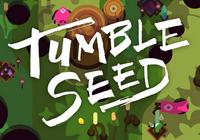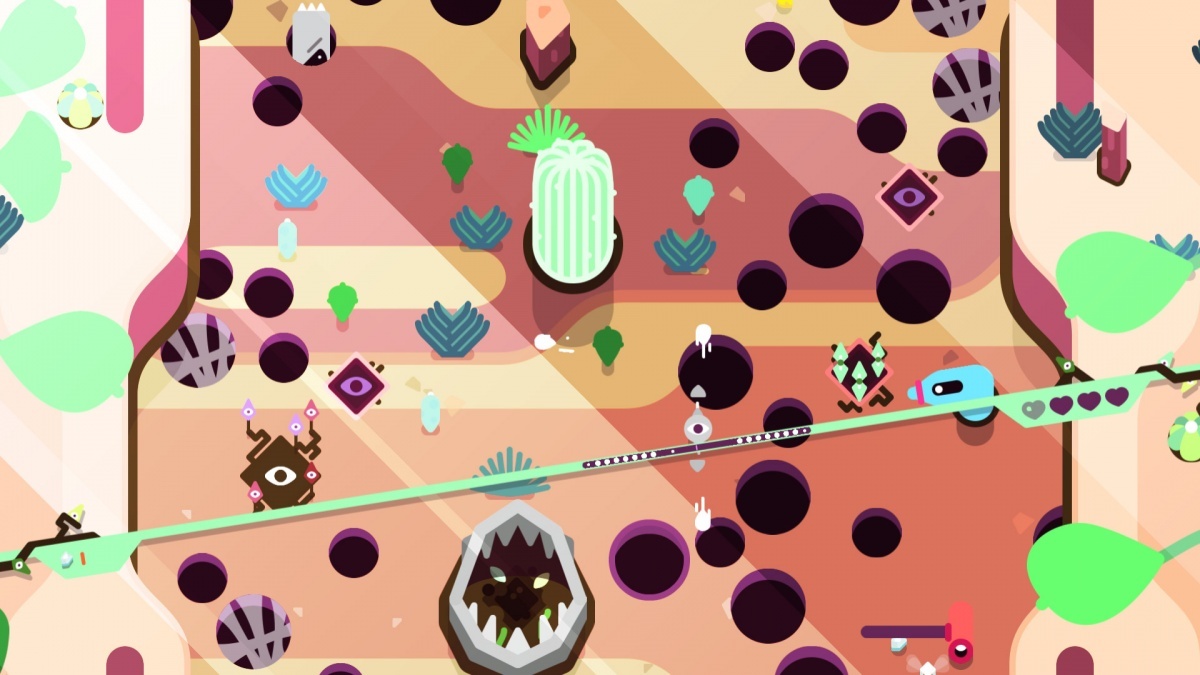TumbleSeed (Nintendo Switch) Review
By Renan Fontes  07.08.2017
07.08.2017

Pacing in any medium is difficult to nail down, but it seems that video games especially struggle in the hunt for a satisfying pace. Story is almost exclusively the focus in discussions revolving around pace issues, but there is a lot to be said on pace within gameplay. Too many mechanics introduced in succession of one another can become overwhelming, and mechanics spread too far between can feel out of place with whatever is established early on. It is important not only to properly pace the rate at which gameplay concepts are introduced, but how the game plays, as well. TumbleSeed does just that and, while it is certainly far from perfect, it showcases how masterfully pacing can be integrated into a video game's core design.
It is actually quite difficult to categorise TumbleSeed into one specific genre. It cannot be a platformer as it lacks platforms, and calling it an action-adventure title would imply an equal emphasis on both action and adventure. If anything, the gameplay most resembles a rail shooter where the rails are fully controllable.
Moving a seed by tilting a branch around sounds simple enough on paper, but that simplicity is quickly contradicted by a stiff control scheme. Typically stiff controls are associated with bad controls, but that could not be further from the truth here.
Movement is stiff by design in order to promote a patient and careful play style. Right away, it becomes apparent just how slowly the seed moves and how important complete control of the branch is. The stiffness is not a design flaw, but a necessary addition to give the seed real weight and momentum.

Patience is key in adjusting to the controls and it is here where TumbleSeed starts to show off how well paced it is. The first gameplay section is a harmless climb upwards. Any setbacks with the branch and seed result in a few lost seconds, but nothing worth getting upset over.
As soon as the seed reaches the top of the first area and controlling it has gotten considerably easier, planting and seed switching are introduced. Planting allows a seed to utilise its ability at the expense of crystals and seed switching changes which seed is on the field.
The default seed places down a flag that acts as a checkpoint, while the other three main seeds farm crystals, grow thorns to attack enemies, and replenish hearts whenever the seed scurries over fresh soil.
These different seeds need to be swapped in and out at any given moment to best take advantage of their abilities. Enemies become particularly relentless as the seed reaches higher portions of the mountain, so taking advantage of every plot of soil without losing momentum ends up being critical.

An assortment of power-ups can be found along the way to help the seed even more, and quests from the base of the mountain can be done to unlock new abilities independent of the seed switching. These two small additions add a degree of longevity to the single-player, but they also represent TumbleSeed's two biggest problems: randomisation and how easily the difficulty can be broken down.
A careful consideration is given to pacing the introduction of gameplay mechanics and the progression of difficulty, so it is immensely disappointing when all that pacing is thrown out the window in favour of procedurally generated levels. Randomised stages are far from a bad thing, but the carefulness put into the seed's controls would have benefitted more from crafted stages that actively engage and interact with the mechanics.
As it stands, every section of the mountain feels like a palette swap of the first. A few new enemies turn up and the amount of pitfalls present escalate, but there is very little synergy between the gameplay and the game design.

Daily and weekly challenges act as an alternative to the main mountain trek, but randomisation across the board feels rather pointless. When every mode offers roughly the same concept, something is clearly wrong.
Roguelike elements, as out of place as they are, are nothing compared to how messily unlockable skills butcher the difficulty. A great deal of time is spent in establishing the challenges present, but all that is trivialised the moment an ability that lets you negate heart loss from falling into pits is unlocked.
Quest unlockables are useful. Too useful. TumbleSeed quickly goes from being a lesson in patience, to a reckless romp up a hill with minimal concern for safety. Since bottomless pits end up appearing more frequently later on, trivialising the challenge is as simple as dropping a checkpoint every few soil patches and committing suicide whenever an enemy gets too close for comfort.
Despite its flaws, TumbleSeed is not bad, just misguided. It manages to find a pace that works great for itself while also promoting a patient style of gameplay that is seldom seen, but it also chooses to trivialise its difficulty with easy to obtain unlockables and samey level design. The novelty of slowly moving a seed up a mountain will surely be remembered fondly, but the same cannot be said for all the wasted potential.

Cubed3 Rating
Good
In a generation that has struggled with finding the right balance of pace, it is refreshing to see a developer place a great deal of emphasis on patient gameplay and actually pull it off. Vertical progression and slow movements are valued over everything else, and these are the two elements that allow TumbleSeed to thrive as much as it does. Unfortunately, that same level of importance given to fine tuning the controls and concept is noticeably lacking in the level design, as roguelike randomisation is given priority over traditional, handcrafted stages. Along with too many power-ups and unlockable skills that trivialise most of the difficulty, TumbleSeed fails to live up to all its potential despite the clear amount of creativity put into its premise and a strong first impression.
Comments
Comments are currently disabled

 Sign In
Sign In Game Details
Game Details
 Out now
Out now  Out now
Out now  Out now
Out now  Out now
Out now  Subscribe to this topic
Subscribe to this topic Features
Features






 Top
Top

